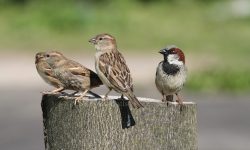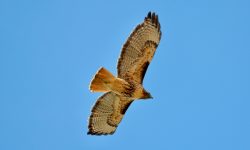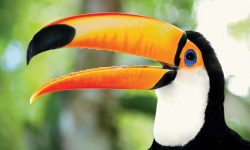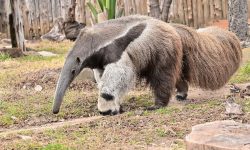With their charcoal plumage, ruby-red eyes, and oversized lobed feet, American Coots (Fulica americana) often confound casual observers. Are they ducks? Shorebirds? Something in between? These waterbirds defy simple classification, straddling the line between elegance and awkwardness as they patrol marshes, lakes, and ponds across North America. More than just common marsh dwellers, coots are fascinating avian specialists—perfectly adapted to life on the edge of water and land.
This article explores the biology, behavior, adaptations, and ecological role of American Coots, revealing why they truly are the masters of marshes and quiet lakes.
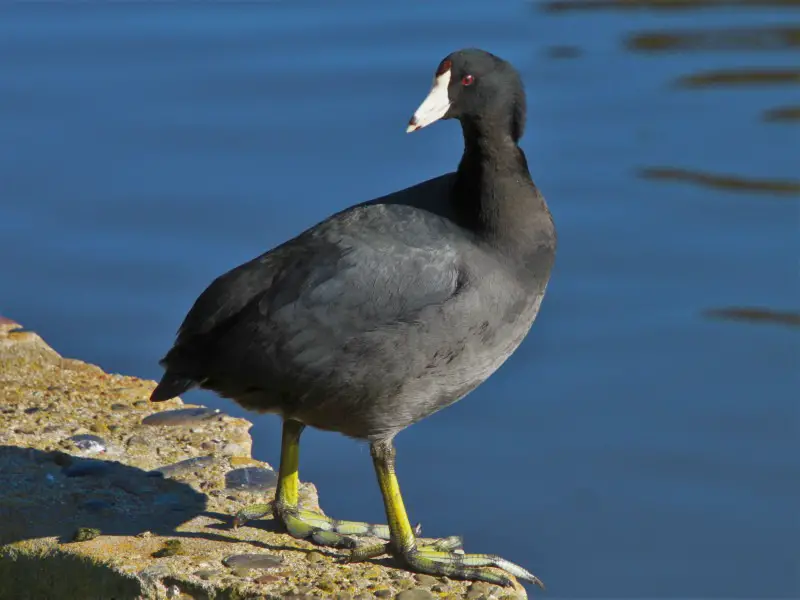
What Exactly Is an American Coot?
Not a Duck, But a Rail
Though often mistaken for small, dark ducks, American Coots actually belong to the rail family (Rallidae)—a group of secretive, marsh-loving birds that includes moorhens and gallinules. Unlike ducks, coots lack webbed feet. Instead, they sport distinctive lobed toes, which help them paddle through water and walk on floating vegetation with surprising ease. Their closest relatives are birds of thick wetland vegetation—not open water—which explains their preference for reed-choked marshes and shallow lakes with abundant aquatic plants.
Appearance and Identification
American Coots are medium-sized waterbirds, typically around 15 inches long with a wingspan of about 23 to 25 inches. Their bodies are mostly sooty gray to black, and they have a stark white bill with a dark reddish ring near the tip. A small red shield on the forehead—more visible in breeding season—adds a splash of color to an otherwise monochrome palette. In flight, coots appear heavy-bodied and slow to rise, often flapping noisily across the water’s surface before becoming airborne.
Habitat and Range
Marshland Masters
American Coots are freshwater specialists. You’ll find them in marshes, slow-moving rivers, reservoirs, ponds, and quiet lakes, especially those rimmed with cattails, bulrushes, or sedges. They thrive where aquatic vegetation is dense, as these habitats provide both cover and food. They’re most numerous in prairie pothole regions, the Gulf Coast, and the Central Valley of California, though they’re present throughout the continental U.S. and southern Canada.
Seasonal Movement
Coots are partial migrants. Northern populations often move south during winter, congregating in huge numbers in wetlands from the southern U.S. to Central America. During migration and winter, they form massive rafts, sometimes numbering in the thousands, making them one of the most visible waterbirds in wetlands.
Feeding Behavior and Diet
Omnivorous Opportunists
American Coots are omnivores, feeding on a mix of aquatic vegetation, algae, insects, mollusks, crustaceans, and even small vertebrates like tadpoles or fish fry. They forage by dabbling, diving, or grazing on land, and are known to snatch food from other birds—a behavior called kleptoparasitism.
Their diet includes pondweed, wild celery, duckweed, water beetles, dragonfly larvae, midges, snails, worms, small clams, seeds, and grains from surrounding vegetation. Their ability to switch food sources allows them to adapt to a wide variety of wetlands across North America.
Unique Adaptations
The Power of Lobed Toes
Perhaps the coot’s most striking adaptation is its lobed feet—fleshy extensions on each toe that act like paddles in the water and snowshoes on land or mud. This gives them surprising agility in aquatic environments while allowing them to walk across floating mats of vegetation, where other birds might sink.
Aggressive and Territorial Behavior
Coots may look comical, but they are fiercely territorial, especially during breeding season. Males defend their territories with head-lowered charges, wing-flapping, and even physical combat. They’ll attack intruders, including ducks, other coots, or even larger waterbirds. This aggression is also seen in feeding areas, where dominant individuals may control access to prime foraging spots.
Breeding and Reproduction
Nesting Habits
During the spring, coots form monogamous pairs and establish territories in dense marsh vegetation. The female builds a floating nest platform, often hidden in reeds, using aquatic plants and anchored to submerged stems. She lays 8 to 12 eggs, which both parents incubate for about 21 to 25 days. The eggs are speckled and beige, well-camouflaged among the reeds.
Raising Cootlings
Coot chicks are instantly recognizable. They hatch covered in black down, with bright orange and red plumes on their heads and necks—a rare burst of color in the otherwise understated species. This “neon punk” look may stimulate stronger feeding responses from parents. Both parents feed and guard the chicks, though coots are known for ruthlessly trimming their broods if food becomes scarce, a behavior known as facultative brood reduction. This ensures that at least a few strong chicks survive, even under tough conditions.
Vocalizations and Social Communication
American Coots are not shy birds—they’re noisy, clucking, squawking, and grunting, especially when alarmed or during territorial disputes. Their calls are short, sharp, and repetitive, functioning both to signal alarm and to maintain social bonds within groups. They also use body language—head pumping, tail flicking, and chest puffing—to communicate dominance or submission.
Ecological Role
Coots play an important role in aquatic ecosystems. As foragers, they help control aquatic plant growth and serve as prey for predators like bald eagles, snapping turtles, mink, and foxes. Their eggs and chicks are especially vulnerable to marshland predators, making coots a crucial link in wetland food webs. They’re also important indicator species—their presence or absence can signal the health of a wetland ecosystem, as they’re sensitive to water pollution and habitat loss.
Conservation and Threats
Current Status
The American Coot is currently listed as a species of Least Concern by the IUCN. It remains abundant and widespread, with an estimated global population of over 10 million birds.
Threats and Challenges
Despite its resilience, the species faces challenges including habitat destruction, especially the draining or pollution of wetlands; lead poisoning from ingestion of spent fishing tackle or ammunition; and collisions with powerlines and vehicles, especially during low visibility.
Conservation efforts that protect wetlands—such as the Clean Water Act, wetland restoration projects, and waterfowl management—indirectly benefit American Coot populations.
Fascinating Facts About American Coots
Unlike ducks, coots must run across the water to gain enough speed for takeoff. They’re one of the few birds that recognize and reject brood parasites, like cowbird eggs. Coots often fake injury (like dragging a wing) to distract predators away from nests. Their chicks’ fiery head plumage fades within a few weeks as they gain independence. A group of coots is sometimes called a “cover” or a “raft.”
Conclusion: Underestimated Architects of the Marsh
The American Coot is more than just a dark bird paddling in the background of your local wetland—it is a survivor, a scrappy contender, and an ecological keystone. From its bold behavior to its quirky biology, the coot reminds us that even the most overlooked birds have stories worth discovering.
So next time you’re walking along a lake or peering into a marsh, take a closer look. Listen for the clucks. Watch the ripples. The masters of the marsh may be putting on a show right beneath your gaze.


